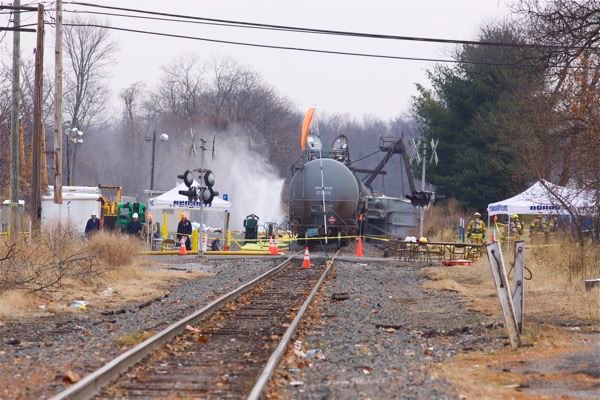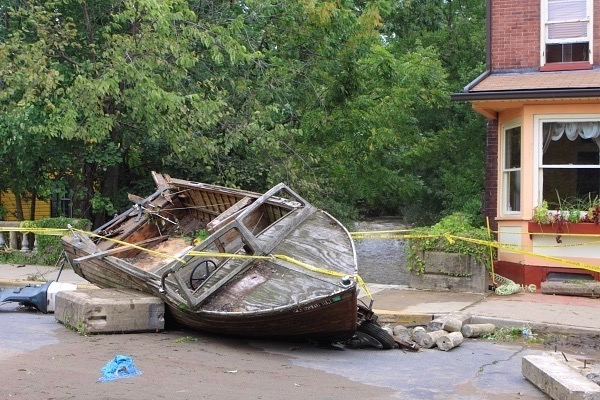NJ Gov. Murphy (Falsely) Claims He Has The Strongest Environmental Record In The Country
Murphy A Huge Disappointment On Climate And Environment
The Gov.’s Rhetoric Is Belied By The Record
The Gov. Is Batting Just 0.119 (5 for 42)
I just heard NJ Gov. Phil Murphy straight up claim he had the strongest environmental record in the country. (The Gov. was interviewed on David Cruz’ “Chatbox” show – watch at time 8:20.)
The Gov. made that highly misleading and outright false claim in response to a viewer’s criticism of his support for NJ Turnpike expansion and alleged that he was “tripling down” on new fossil infrastructure. The Gov. took exception and called the premise of the question “ridiculous”, followed by an arrogant laugh. The Gov. then cited his accomplishments on offshore wind, solar, and environmental justice.
Well, the laugh is on Gov. Murphy.
He must believe his own spun press releases and the environmental cheerleaders he funds.
New York State is running circles around his environmental record, particularly on climate.
For example, NY has legally binding, enforceable, and funded climate goals (for greenhouse gas emissions reductions and renewable energy capacity) and NY State is embarked on a comprehensive public planning process to implement those goals. NY is closing nuclear plants (Indian Point). NY regulates all GHG emissions sectors and protects the carbon storage and sequestration values of forests.
In contrast, NJ’s Global Warming Response Act sets toothless, voluntary, aspirational goals. Gov. Murphy’s Executive Orders are not enforceable and serve essentially as press releases. NJ relies for funding on the pitiful RGGI emission allowance revenues and Murphy has diverted hundreds of millions of Clean Energy Fund revenues to other purposes. DEP carbon dioxide regulations (which apply only to a small portion of the power sector) set weaker standards than what the private market already meets and those standards are totally unrelated to the GWRA goals. BPU Energy Master Plan goals and programs require case by case implementation and are limited by cost tests and legal caps. Murphy provides $300 million per year in nuclear subsidies, over $1 billion so far. Murphy’s wind program relies on huge corporate subsidies, natural gas backup power, and is experiencing delays and cost over-runs that raise questions of economic feasibility. Solar installed capacity has fallen short of projections and Murphy’s solar legislation is stalled and it relies on a complex solar credit scheme from out of State renewable power generators. Huge subsides to nukes and caps and delays on solar – heck of a job! And NJ DEP is logging state forests based on sham slogans.
But aside from a State by State comparison, the Murphy environmental record is weak by NJ standards and historical achievements and expectations of the public.
Murphy was faced with a huge challenge after 8 years of Gov. Christie’s neglect and rollbacks.
I was involved in a similarly challenging situation upon returning to work for the McGreevey DEP Commissioner in 2002, after 8 years of Christie Whitman’s “Open For Business” environmental disaster. McGreevey Commissioner Brad Campbell’s first move – and my first project assignment – was to conduct a Department-wide “Vulnerability Assessment” to get all the skeletons out of the closets and prepare a public “Honest Baseline” report documenting that challenge (a smart move by Campbell not only to set the Whitman record straight and define the policy reform agenda, but also to avoid being blamed for the Whitman policies and mistakes in the pipeline).
But Gov. Murphy did nothing remotely like that. His approach was essentially to maintain continuity at DEP. Examples:
1. Murphy’s initial DEP Commissioner Catherine McCabe was weak and ineffectual and didn’t last long. Murphy replaced McCabe with Commissioner LaTourette, a former corporate lawyer who represented large polluters and has extensive conflict of interest ethical challenges. Gov. Murphy actually had the gall to call LaTourette an “Erin Brockovich” public interest lawyer!
2. Shamefully, his DEP has failed to reverse any of the Christie DEP regulatory rollbacks and budget cuts. Note: The Legislature effectively repealed the Christie DEP Highlands Septic Density Standard rollback, not DEP.]
3. From a policy perspective, DEP has done very little to respond to longstanding environmental problems and flawed DEP policies, weak regulations, lax enforcement (including the elimination of enforcement Division and consolidation of political control in Commissioner’s Office), and inadequate programs.
Perhaps worse, the Murphy DEP has cut back even further on production of annual performance reports on DEP’s various programs, forcing the public to conduct incredibly difficult website searches using DEP’s flawed databases. The Murphy DEP has expanded the abuse of the Open Public Records Act, particularly to deny public records under the “deliberative privilege” exemption, thereby throwing a blanket of secrecy over virtually all DEP staff work, Reports, and internal communications. The lights are out at DEP for the public (frustrating transparency and accountability), but the revolving door and back door are wide open for corporate interests to exploit.
For example, at the outset of the Murphy Administration (January 27, 2018), I outlined a comprehensive set of benchmarks to measure DEP’s performance.
I laid out 42 specific actions DEP needed to take to begin moving the ball forward (reversing the Christie DEP rollbacks was the first step, see:
I just quickly reviewed that list and DEP’s performance has been pathetic. DEP only partially addressed 4 or 5 of the 42 actions, which I repeat here so readers can see for themselves that the Gov. is full of crap:
1. In May 2010, the NJ DEP issued a Report that found over 500 unregulated chemicals in NJ water supply & that granular activated carbon (GAC) treatment was cost effective.I wrote:
DEP scientists presented a Report to the NJ Drinking Water Quality Institute on May 7, 2010.
The Report, entitled “Investigations Related to a ‘Treatment-Based’ Regulatory Approach to Address Unregulated Contaminants in Drinking Water“ found over 500 unregulated chemicals are present in NJ drinking water.
It recommended that public water supply systems install treatment to reduce the health risks of these chemicals.
DEP has known about these risks since 1997 – but has failed to act to protect public health.
We are petitioning DEP to develop regulations that require public water supply systems to install treatment systems, monitor for these chemicals, and disclose these risks to consumers.
The DEP denied our petition.
So, will the Murphy DEP continue the ineffective chemical specific risk assessment approach to developing drinking water MCL’s or shift to a Treatment Based Approach, as recommended by DEP scientists almost a decade ago?
2. Will the Murphy DEP adopt regulations to quantify and enforce Natural Resource Damage (NRD) injuries in order to fix legal and technical defects found by NJ Court decisions and vulnerabilities that Gov. Christie’s AG found weakened the State’s litigation hand and used as a rationale to settle not further litigate (i.e. Exxon et al)?
3. Will the Murphy DEP repeal Christie DEP rollbacks of stream encroachment (C1 protections), CAFRA (and not just the public access provisions), WQMP, & Highlands regulatory protections?
4. Will the Murphy DEP rescind, strengthen, and replace the Christie DEP Water Supply Plan(after holding public hearings throughout the state)?
5. Will the Murphy DEP reverse Christie DEP Clean Water Act TMDL policy for Barnegat Bay & trigger a watershed-wide TMDL for the entire Bay? (DEP’s water quality monitoring, assessment, and TMDL programs need major overhauls after 8 years of Martin’s neglect and politicization of science).
6. Will the Murphy DEP mandate the statistical 500 year event in all DEP water resource & infrastructure programs to reflect climate change impacts?
7. Will the Murphy DEP act on DEP scientists’ recommendations in a DEP Report to upgrade several streams to Category One status & otherwise expand the C1 program that was stalled by the Christie DEP?
8. Will the Murphy DEP rescind and replace the Christie DEP “Nutrient Criteria Enhancement Plan” & enforce nutrient criteria Surface Water Quality Standards in land use permitting and mandate nutrient removal treatment in NJPDES POTW permits? (POTW = sewage treatment plants)
9. Will the Murphy administration develop a regional land use regulatory planning scheme to protect water resources of the ecologically exceptional, highly vulnerable, and badly neglected Delaware Bayshore? (along the lines of Pinelands and Highlands)
10. Will Gov. Murphy repeal Gov. Christie’s Executive Orders #2 (regulatory relief, federal consistency, pre-proposal review) and #3 (Red Tape)?
11. Will Gov. Murphy & DEP incorporate climate change reviews, backed by enforceable standards, retrofit requirements, and offsets, to meet the emission reduction goals of the Global Warming Response Act in all land use, infrastructure, air quality, and water resource permits?
12. Will Gov. Murphy – like NY Gov. Cuomo – direct DEP to deny all fossil infrastructure permits based on Clean Water Act Section 401 Water Quality certification?
13. Will Gov. Murphy reverse Gov. Christie’s water resource infrastructure, State lands, & State Parks privatization policies and rescind Christie privatization Executive Orders (see EO17)?
14. Will the Murphy DEP reverse the Christie DEP State Public Lands logging policies and plans (i.e. Sparta Mountain WMA “Forest Management Plan”, stop privatizing planning stormwater state lands and parks by so called conservation groups like NJ Audubon and NJ Future, and revise all similar “Stewardship” initiatives”, et al))
15. Will the Murphy DEP repeal current policy to rely on “BMP’s” and instead enforce NJ Surface Water Quality Standards on forestry, agricultural practices and in freshwater wetlands and land use permits?
16. Will Gov. Murphy issue Executive Orders to expand public involvement in DEP regulatory & permit decisions and develop Urban environmental quality and environmental justice policies, including mandatory Environmental Justice reviews in designated EJ communities?
17. Will the Murphy DEP close many loopholes and gaps in DEP’s site remediation program to protect groundwater resources & water supplies?
18. Will the Murphy DEP abolish the Science Advisory Board, which has gross conflicts of interest and has become a vehicle for undue industry access, politicization of science, and attacks on regulatory public health and environmental protections?
19. Will the Murphy DEP stop issuing and revoke hundreds of existing DEP approved “Classification Exception Areas” that waive compliance with groundwater quality standards and instead mandate permanent cleanup of groundwater at high risk contaminated sites?
20. Will the Murphy DEP adopt long overdue “eco-flow goals” in water allocation regulations, backed by enforceable numeric standards?
21. Will the Murphy DEP begin to enforce exceedences of current water allocation permit limits?
22. Will the Murphy DEP revoke and strengthen DEP’s “Vapor Intrusion Guidance” to eliminated the “phased approach” and protect people in their homes from toxic pollution vapors?
23. Will the Murphy DEP revive and adopt drinking water MCL for perchlorate proposed by the Corzine DEP and killed by the Christie DEP, as well as 14 other hazardous drinking water contaminants previously recommended by the Drinking Water Quality Institute?
24. Will the Murphy DEP begin to collect market based lease and easement revenues for private use of state lands and natural resources?
25. Will Gov. Murphy support, work with Senator Smith, and sign legislation to eliminate the current$50 million cap on liability for spills?
26. Will Gov. Murphy support and work with Senator Smith to enact water user and development or impervious surface impact fees to fund the multi-billion dollar water infrastructure deficit?
27. Will the Murphy DEP end current DEP policy to rely on “shelter in place” responses to chemical spills and catastrophic releases and begin to develop protective policies for those who live in mapped “off site consequence” areas under NJ State TCPP and federal Clean Air Act ARP programs? (Paulsboro train derailment et al).
28. Will Gov. Murphy use his powers to block “bomb trains” and other unsafe toxic rail and truck shipments through NJ to protect vulnerable communities? How will the administration address these unacceptable risks?
29. What will the Gov. and the Murphy DEP do to promulgate enforceable requirements for reducing risks identified in NJ’s federally mandated Hazard Mitigation Plan?
30. Will the Murphy DEP revoke and reissue the Christie DEP stormwater and CSO permits to include enforceable timetables and technical requirements?
31. Will the Murphy DEP adopt new rules to mandate risk assessment – based on cumulative risk to the most vulnerable populations – and more stringent “advances in the art” (NJ’s legal standard) air pollution controls for Hazardous Air Pollutants (HAPs)
32. Will Gov. Murphy support and work with the legislature to ban importation and disposal of fracking wastewater? Will the DEP use all regulatory tools to restrict such practices?
33. Will the Murphy DEP restore the Commissioner’s Office that conducts department-wide policy, planning, and regulation, while applying DEP’s scientists recommendations? This Office was abolished by the Christie DEP.
34. Will the Murphy DEP eliminate Christie DEP initiatives, programs, and Offices designed to serve corporate interests over protection of public health and the environment, including “culture change”, “customer service”, economic development, dispute resolution, sustainable towns and business, et al?
35. Will the Murphy DEP re-open Bulls Island State Park?
36. Will the Murphy DEP sever all relationships, State funding, and pending projects with NJ Audubon Society?
37. Will the Murphy Administration terminate funding and support of “Sustainable NJ” and stop outsourcing climate adaptation to private groups and local governments?
38. Will Murphy terminate Christie plans to develop and/or privatize Liberty State Park and terminate all State funding and support for NJ Future?
39. What are the Murphy Administration’s specific plans to get the Pinelands Commission and Highlands Council back on track?
I saved the best for last:
40. Given NJ’s experience with Superstorm Sandy and Gov. Christie’s “Rebuild Madness”, will Gov. Murphy support and sign legislation to:
a) establish a Coastal Commission to conduct regional climate adaptation and land use planning and environmental management?
b) repeal the “right to rebuild” storm damaged properties in CAFRA and the Flood Hazard Control Act?
Will these kind of questions be asked? Will NJ’s environmental community make these kind of specific demands publicly and criticize failure to engage?
The whole State is watching.



